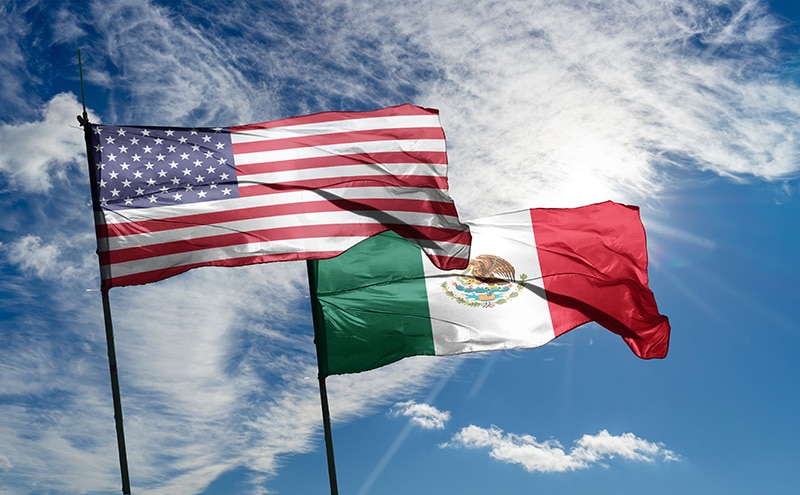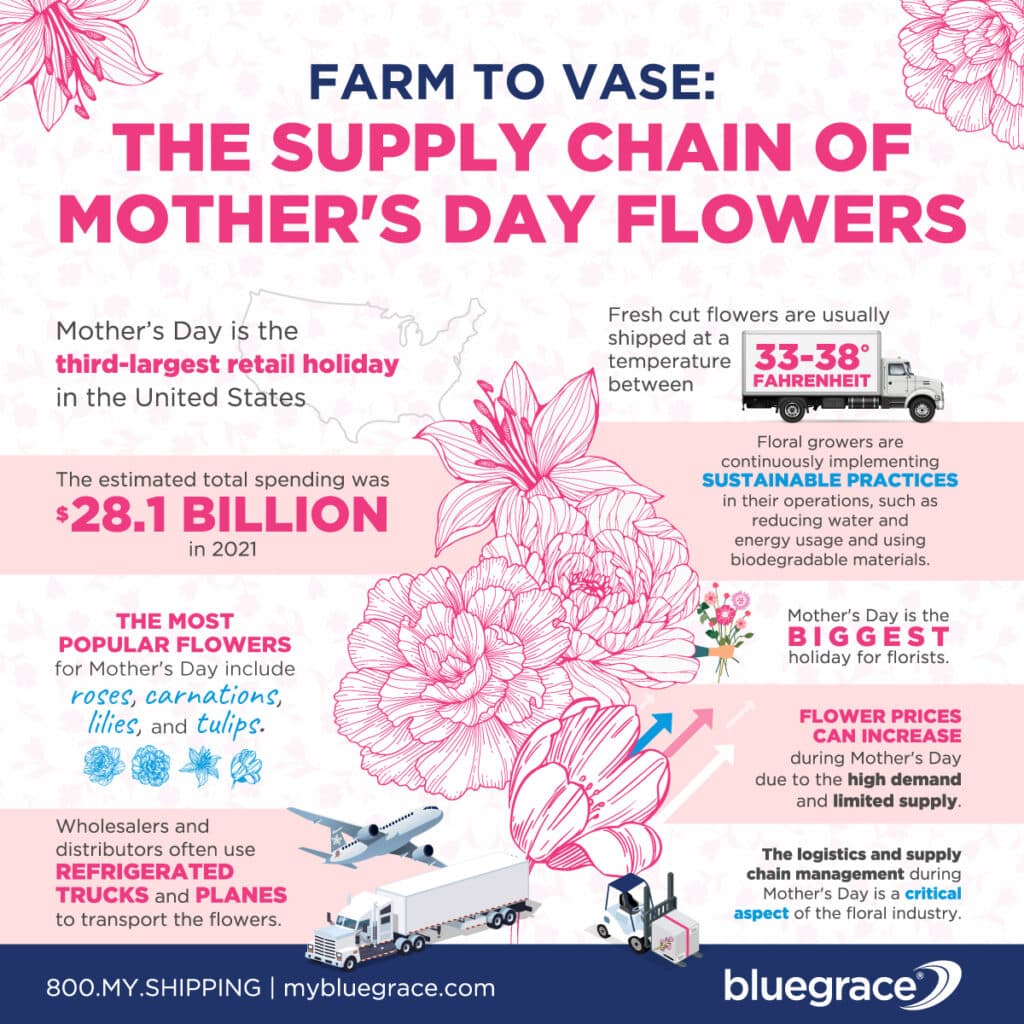
Mother’s Day is a special day to celebrate and honor mothers around the world. However, the supply chain of Mother’s Day flowers is a complex process that involves many different players and stages.

Mother’s Day is a special day to celebrate and honor mothers around the world. However, the supply chain of Mother’s Day flowers is a complex process that involves many different players and stages.
What’s in the article:
According to the National Retail Federation, Mother’s Day is the third-largest retail holiday in the United States, with an estimated total spending of $35.7 billion in 2023. The supply chain of flowers during Mother’s Day starts with growers, who are responsible for cultivating and harvesting the flowers. The most popular flowers for Mother’s Day include roses, carnations, lilies, and tulips. These flowers are grown in different parts of the world, with Colombia and Ecuador being the top flower producers for the United States market. Growers must carefully manage their crops to ensure that they are ready for the peak demand during Mother’s Day.
Once the flowers are harvested, they are transported to wholesalers and distributors, who are responsible for preparing the flowers for shipment to retailers and florists. This stage of the supply chain is critical, as flowers are highly perishable and require careful handling and transportation to ensure they arrive at their destination fresh and in good condition.
Fresh cut flowers are usually shipped at a temperature between 33-38 degrees Fahrenheit.
Wholesalers and distributors often use refrigerated trucks and planes to transport the flowers, and they must carefully manage the temperature and humidity levels to prevent the flowers from wilting or getting damaged. Fresh cut flowers are usually shipped at a temperature between 33-38 degrees Fahrenheit.
Florists and retailers play a crucial role in the supply chain of flowers during Mother’s Day. They are responsible for ordering the flowers and preparing them for sale to customers. Florists and retailers typically place their orders for Mother’s Day flowers weeks in advance to ensure they have enough inventory to meet the high demand. They must carefully manage their stock to ensure that they have a variety of flowers available to meet the different preferences of their customers.
The logistics and supply chain management during Mother’s Day is a critical aspect of the floral industry. The coordination between growers, wholesalers, distributors, florists, and retailers is crucial to ensure the timely and efficient delivery of flowers. In some cases, flower prices can increase during Mother’s Day due to the high demand and limited supply.
Mother’s Day is the biggest holiday for florists, and as a result, the demand for flowers can lead to price increases.
According to the National Retail Federation, consumers plan to spend $274.02 per person for Mother’s Day, the highest in the history of the survey and up from the previous record high of $245.76 in 2022. Additionally, the Society of American Florists notes that Mother’s Day is the biggest holiday for florists, and as a result, the demand for flowers can lead to price increases. Factors such as weather conditions, transportation costs, and supply chain disruptions can also impact the price of flowers. However, the focus is always on ensuring the best quality flowers and delivery to customers.
In recent years, there has been a growing emphasis on sustainability in the floral industry, with many growers and retailers promoting eco-friendly practices and local sourcing. Sustainability is becoming an increasingly important factor in the decision-making process for consumers, and the floral industry is no exception. Floral growers are continuously implementing sustainable practices in their operations, such as reducing water and energy usage and using biodegradable materials.
Both growers and retailers are now focusing on reducing the use of pesticides and fertilizers, promoting fair labor practices, and using eco-friendly packaging.
The supply chain of flowers during Mother’s Day is a complex process that involves many different players and stages. From growers to wholesalers, distributors, florists, and retailers, each player plays a critical role in ensuring the timely and efficient delivery of flowers.
Despite the challenges and complexities of the supply chain, the floral industry remains an important part of the Mother’s Day celebration, with flowers serving as a symbol of love and appreciation for mothers around the world.
Get expert logistics insights delivered straight to your inbox
"*" indicates required fields